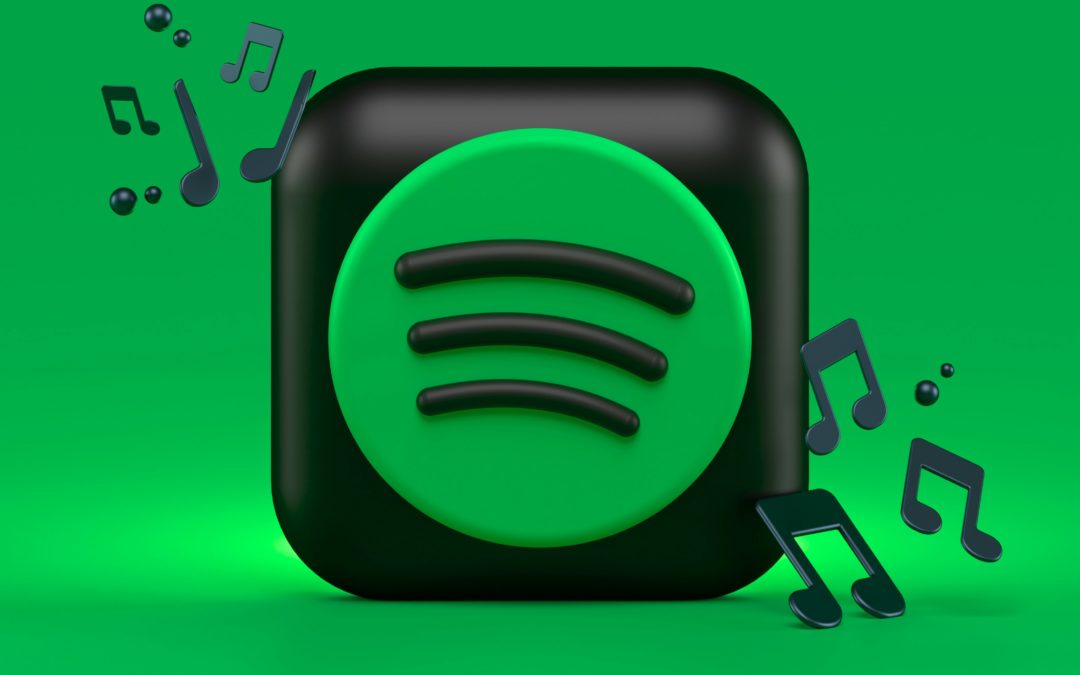
by Jonathan P-Wright | Jun 26, 2024 | Business News, Latest, Music News |
Photo by Alexander Shatov on Unsplash
In a perplexing turn of events, the music streaming behemoth Spotify recently raised the prices of its Premium Individual and Premium Family subscription plans. This move, which saw a $1 increase for the Individual plan and a $3 hike for the Family plan, was met with considerable backlash from users who felt blindsided by the sudden price surge.
However, the real point of contention arose when Spotify bundled its audiobook service with these premium plans, a feature that many subscribers deemed unnecessary and unwanted. This decision was particularly contentious because it allowed Spotify to classify its offerings as a bundled service, thereby qualifying for lower royalty rates payable to artists and music publishers.
According to industry estimates, this strategic maneuver could potentially result in a staggering $150 million reduction in royalty payments to musicians, a prospect that understandably ruffled feathers within the creative community.
Spotify’s Unexpected Reversal: Introducing the Basic Individual Plan
In a surprising turn of events, Spotify has now announced the introduction of a new Basic Individual plan, effectively reversing its controversial decision to bundle audiobooks with premium subscriptions. This new plan, priced at $1 lower than the Premium Individual plan, offers users the core music streaming experience without the added audiobook feature.
By unbundling audiobooks from its premium offerings, Spotify has effectively addressed two critical concerns: firstly, it has alleviated the frustration of users who felt compelled to pay for a service they had no intention of using; secondly, it has potentially mitigated the risk of reduced royalty payments to artists and music publishers.
A Win-Win Scenario for Users and Artists?
This strategic move by Spotify appears to be a calculated effort to appease both its user base and the creative community. By offering a more affordable option for music streaming without the audiobook component, Spotify has effectively acknowledged the concerns of subscribers who felt shortchanged by the previous pricing structure.
Moreover, by separating audiobooks from its core music streaming service, Spotify has potentially averted a substantial reduction in royalty payments to artists and music publishers. This decision could be viewed as a olive branch extended to the creative community, acknowledging their legitimate concerns over fair compensation for their work.
Spotify’s Evolving Business Strategy: Adapting to Market Demands
Spotify’s recent actions underscore the company’s willingness to adapt its business strategy in response to market demands and user feedback. By introducing the Basic Individual plan, Spotify has demonstrated its ability to course-correct and address the concerns of its stakeholders, be they subscribers or content creators.
This agility and responsiveness could prove to be a significant competitive advantage for Spotify in the highly saturated and fiercely competitive music streaming market. By actively listening to its user base and addressing their pain points, Spotify has the potential to foster greater brand loyalty and customer retention.
The Balancing Act: Satisfying Users and Artists Simultaneously
While Spotify’s latest move appears to be a positive step towards reconciling the interests of its users and the creative community, the company must tread carefully to maintain this delicate balance. As a platform that relies heavily on both its subscriber base and the content provided by artists, Spotify must continually strive to satisfy the needs and expectations of both parties.
One potential challenge lies in the realm of pricing and revenue generation. While the introduction of the Basic Individual plan may appease users seeking a more affordable option, Spotify must ensure that its revenue streams remain robust enough to sustain its operations and fairly compensate artists for their work.
Exploring Alternative Revenue Streams: Advertising and Partnerships
To address this challenge, Spotify may need to explore alternative revenue streams beyond subscription fees. One potential avenue could be the strategic integration of advertising within its platform, a model that has proven successful for many digital content providers.
Additionally, Spotify could pursue strategic partnerships and collaborations with various industries, such as fitness, gaming, or even the automotive sector. By leveraging its vast user base and data insights, Spotify could potentially unlock new revenue opportunities while enhancing the overall user experience.
The Audiobook Conundrum: A Separate Service or Integration?
While Spotify’s decision to unbundle audiobooks from its premium subscriptions has addressed immediate concerns, the company must carefully consider its long-term strategy for this segment. Audiobooks represent a rapidly growing market, and Spotify’s foray into this domain could potentially open up new revenue streams and expand its user base.
One approach could be to offer audiobooks as a separate, standalone service, allowing users to subscribe specifically to this offering without being tied to the music streaming plans. Alternatively, Spotify could explore innovative ways to integrate audiobooks seamlessly into its existing platform, perhaps through curated playlists or personalized recommendations.
Exploring Global Expansion: Tailoring Strategies for International Markets
As Spotify continues to expand its global footprint, it must also consider the nuances and preferences of diverse international markets. While the Basic Individual plan may resonate with users in certain regions, other markets may have different pricing sensitivities and content preferences.
To effectively cater to these varying demands, Spotify may need to tailor its pricing strategies, content offerings, and marketing approaches to align with the unique cultural and economic landscapes of each region. This could involve forging strategic partnerships with local content providers, leveraging localized marketing campaigns, and potentially offering region-specific subscription tiers or bundled offerings.
The Role of Data Analytics: Driving Personalization and Targeted Offerings
In today’s data-driven landscape, Spotify’s ability to leverage its vast trove of user data could prove to be a significant competitive advantage. By harnessing the power of advanced analytics and machine learning algorithms, Spotify can gain deep insights into user preferences, listening habits, and content consumption patterns.
Armed with these insights, Spotify can deliver highly personalized content recommendations, curated playlists, and targeted promotional offers, enhancing the overall user experience and driving engagement. Additionally, this data-driven approach could inform Spotify’s content acquisition strategies, allowing the company to invest in the genres, artists, and content formats that resonate most with its user base.
Embracing Innovation: Exploring Emerging Technologies and Trends
In the rapidly evolving digital landscape, Spotify must remain at the forefront of innovation, continuously exploring emerging technologies and trends that could shape the future of music streaming and content consumption.
This could involve leveraging technologies such as augmented reality (AR) or virtual reality (VR) to create immersive music experiences, or exploring the integration of voice-enabled assistants for seamless music discovery and playback. Additionally, Spotify could investigate the potential of blockchain technology to revolutionize the way artists are compensated for their work, fostering greater transparency and fairness in the music industry.
Fostering a Collaborative Ecosystem: Empowering Artists and Content Creators
Ultimately, Spotify’s success is inextricably linked to the success of the artists and content creators whose work forms the foundation of its platform. To foster a thriving and sustainable ecosystem, Spotify must actively engage with and empower these creative individuals.
This could involve initiatives such as providing artists with robust analytics and insights into their audience engagement, facilitating direct fan-artist interactions, or offering educational resources and tools to help artists navigate the complexities of the music industry. By positioning itself as a true partner to the creative community, Spotify can cultivate a collaborative and mutually beneficial relationship, driving innovation and fostering a vibrant music culture.
Conclusion: Navigating the Future of Music Streaming
Spotify’s recent moves underscore the company’s commitment to adapting to the evolving needs and preferences of its users and content creators. By introducing the Basic Individual plan and addressing concerns over audiobook bundling, Spotify has demonstrated its willingness to listen and respond to feedback.
However, this is merely the beginning of a longer journey. As the music streaming landscape continues to evolve, Spotify must remain agile, innovative, and responsive to emerging trends and technologies. By fostering a collaborative ecosystem, embracing data-driven insights, and exploring alternative revenue streams, Spotify can navigate the challenges and opportunities that lie ahead, solidifying its position as a leading force in the music streaming industry.
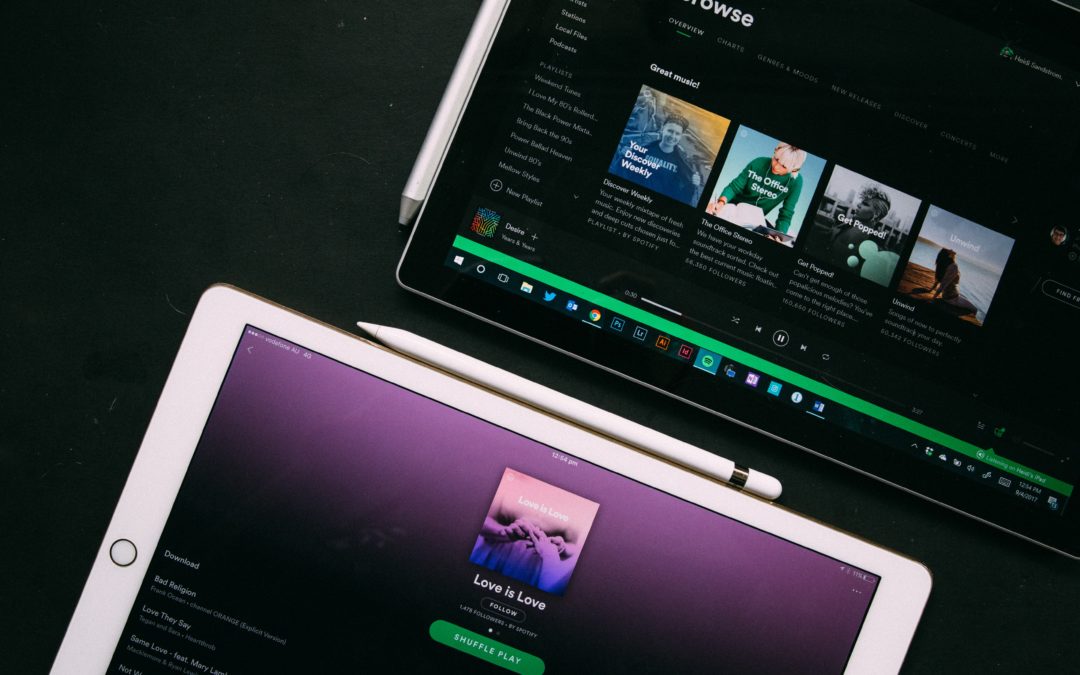
by Laghe Andrews | Jan 16, 2024 | Latest, Music News |
Photo by Heidi Fin on Unsplash
In the annals of music history, The Weeknd’s “Blinding Lights” has etched its name in golden letters. The electrifying track has transcended boundaries, setting the precedent as the first-ever song to surpass the staggering 4 billion stream mark on Spotify. The achievement is a testament to the song’s universal appeal, its addictive melody, and the artist’s soaring popularity.
A Spectacular Journey Began in 2019
First unveiled to the world in November 2019, “Blinding Lights” was a part of The Weeknd’s critically acclaimed fourth studio album – “After Hours”. The album marked a new artistic direction for the Canadian singer-songwriter, defined by a pulsating mix of synth-pop and R&B.
Spotify Honors The Milestone
Recognizing the monumental achievement, Spotify celebrated the occasion with a commemorative video featuring an Abel Tesfaye (The Weeknd’s real name) trophy. It signified the unwavering perseverance of the artist and the incredible impact his music has had on the global audience.
“I’ll never stop being humbled by anything I create making its way to millions of people let alone billions! I’m so thankful this song makes people feel a way that they keep going back to listen,” – The Weeknd
The Weeknd: The Reigning King of Spotify
The Weeknd’s relationship with record-breaking feats is not new. In February last year, he became the first artist in Spotify history to cross 100 million monthly listeners. Currently, he is the most listened-to artist on the platform, boasting 113 million monthly listeners. This incredible reach has placed him in an exclusive league of global music icons.
The Financial Aspect
According to a report by Variety, the revenue generated from “Blinding Lights” is estimated to be between $15.5 million to $17.5 million in royalties. This is supplemented by approximately another $4.5 million in publishing. These numbers underscore the financial power of streaming platforms and the earning potential of chart-topping hits.
Beyond Music: The Weeknd’s Philanthropy
The Weeknd’s influence extends beyond his music. He recently collaborated with the Los Angeles-based nonprofit organization, School on Wheels, to support over 1,000 students experiencing homelessness from kindergarten through twelfth grade. His commitment to giving back to the community adds another layer to his persona, making him a true role model.
Looking Ahead: A New Album on the Horizon
Fans of The Weeknd have more reasons to rejoice. The artist recently hinted at the imminent release of the final album in the After Hours/Dawn FM trilogy. As anticipation builds, the world eagerly waits for another masterpiece from the enigmatic artist.
“Blinding Lights” reaching the 4 billion Spotify streams milestone is a fitting tribute to The Weeknd’s distinctive sound and profound impact on modern music. As the song continues to break records, it stands as a symbol of The Weeknd’s enduring appeal and an anthem for a generation.
The Weeknd has indeed made the world dance to his tunes, and with “Blinding Lights”, he has created a melody that will echo through the annals of music history. As we revel in the mesmerizing beats of this record-breaking song, we eagerly await the magic The Weeknd will conjure next.
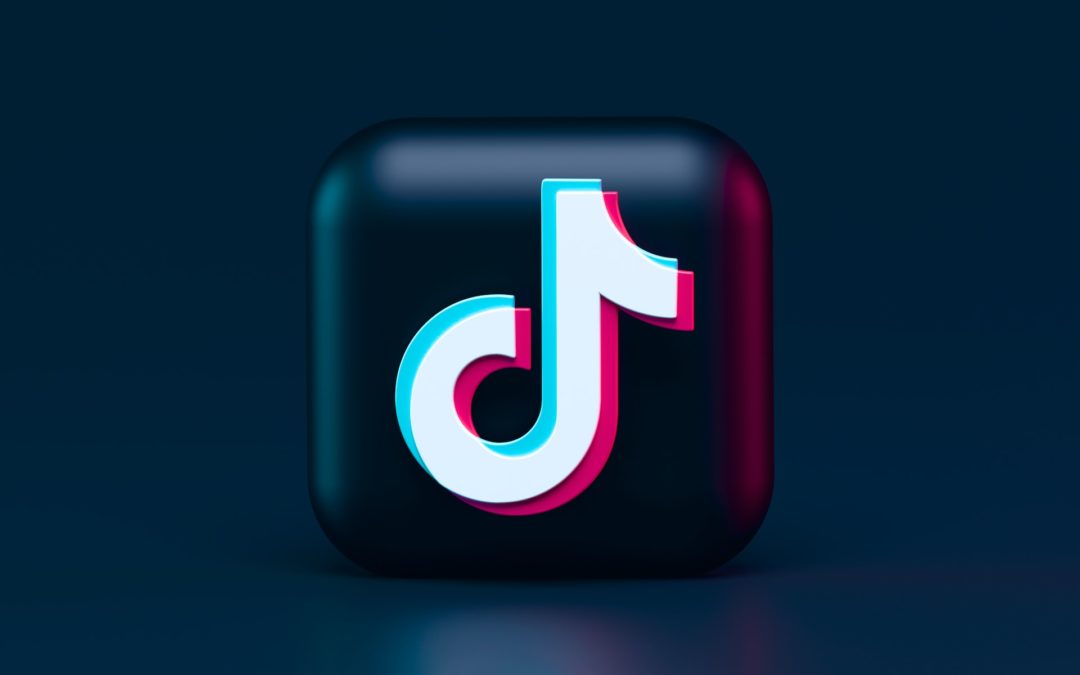
by Jonathan P-Wright | Nov 15, 2023 | Business News, Latest, Music News |
Photo by Alexander Shatov on Unsplash
Exciting news for music enthusiasts and TikTok users! The world’s beloved short-form video platform, TikTok, has formed a groundbreaking partnership with two music industry giants, Spotify and Amazon Music. This collaboration will seamlessly connect the app to the two major music streaming services, allowing users to directly access and integrate their preferred music within TikTok’s creative ecosystem. By intertwining the unparalleled musical libraries of Spotify and Amazon Music with TikTok’s innovative video creation features, users can artfully craft dynamic and engaging content with a personalized soundtrack.
THE IMPACT OF THE PARTNERSHIP ON TIKTOK USERS
The partnership between TikTok, Spotify, and Amazon Music marks a significant milestone for music fans, promising a transformative impact on the experience of TikTok users. With TikTok’s direct link access to Spotify and Amazon Music’s vast music libraries, creators on TikTok will now have an extensive range of songs to choose from when producing their videos. This new feature not only enhances the creative potential of TikTok but also offers users of these third-party music streaming services a seamless and immersive way to express themselves through music. As a result, the partnership is set to elevate the overall quality and diversity of content on the platform, catering to a wide spectrum of musical preferences.
Moreover, this collaboration serves as a testament to TikTok’s commitment to enriching user experience by empowering creators with innovative tools and resources. By bridging the gap between social media and music streaming, TikTok is poised to redefine the way users engage with music within the app, ultimately fostering a more dynamic and interactive environment. This integration with third-party platforms like Spotify and Amazon Music further enhances this.
How TikTok’s Partnership with Spotify Benefits Users
TikTok’s partnership with Spotify brings a myriad of benefits to music fans, amplifying their ability to seamlessly incorporate music into their TikTok Music videos. With access to Spotify’s extensive music catalog via the Spotify login, users can explore a vast selection of tracks across various genres, ensuring that they find the perfect soundtrack to complement their creative content. This integration with the Spotify music streaming service not only streamlines the process of adding music to videos but also enhances the overall production value, allowing users to craft compelling narratives that resonate with their audience.
Furthermore, the partnership with Spotify introduces new avenues for music discovery within the TikTok Music app, as users can easily explore and engage with trending songs and emerging artists directly from the Spotify app. This not only enriches the user experience but also presents an opportunity for musicians to gain exposure and connect with a wider audience of music fans through TikTok’s vibrant community.
Additionally, the integration of Spotify’s music library empowers users to express their creativity in unique ways, fostering a culture of innovation and originality within the TikTok video platform. As a result, TikTok’s collaboration with Spotify promises to unlock new dimensions of artistic expression and storytelling for creators, further solidifying the app’s position as a hub for music fans and creative inspiration and entertainment.
How TikTok’s Partnership with Amazon Music Benefits Users
In a similar vein, TikTok’s partnership with Amazon Music brings forth a host of advantages for music fans, catering to diverse musical preferences and expanding the array of available tracks for TikTok Music content creation. By seamlessly integrating Amazon Music’s extensive collection of songs and albums via the Amazon Music app, TikTok users gain access to a rich and varied musical landscape, enabling them to curate content that resonates with their individual tastes and artistic vision.
Moreover, the collaboration with Amazon Music opens doors for users to explore a wide spectrum of music genres, ensuring that they can find the perfect accompaniment for their videos, regardless of their preferences. This inclusivity and diversity of Amazon Music selection not only empower creators to craft authentic and impactful content but also enriches the overall user experience for music fans, fostering a sense of connection and belonging within the TikTok community.
Furthermore, the integration of Amazon Music introduces an element of convenience and accessibility, allowing users
to seamlessly browse, select, and incorporate prime music into their videos without leaving the TikTok platform. This streamlined process not only enhances the efficiency of content creation but also encourages music fans to experiment with different musical styles and moods, adding depth and emotional resonance to their videos.
The Future of Music Integration on TikTok
As TikTok continues to evolve and expand its musical capabilities through partnerships with industry-leading streaming services like Spotify and Amazon Prime Music, the future of music integration on the platform holds immense promise. The seamless integration of Spotify and Amazon Music signifies a paradigm shift in the way users engage with music within the TikTok ecosystem, laying the foundation for innovative collaborations and features that blur the boundaries between social media and music consumption for music fans.
Looking ahead, this partnership paves the way for enhanced customization and personalization, as users gain greater control over the musical elements in their videos, fostering a more immersive and expressive content creation experience. Additionally, the integration of music streaming services opens up opportunities for TikTok to introduce new interactive features, such as music-driven challenges, interactive playlists, and collaborative music projects, further enriching the platform’s creative landscape for music fans.
Moreover, the partnership between TikTok, Spotify, and Amazon Music sets a precedent for future collaborations between social media platforms and music industry stakeholders, signaling a shift towards a more interconnected and symbiotic relationship between content creation and music discovery. As TikTok continues to innovate and iterate on its third-party music streaming integration features, including Spotify and Amazon Music, users can anticipate a dynamic and evolving environment that celebrates the intersection of music, creativity, and community on a global scale through the Spotify webplayer.
Tips for Leveraging TikTok’s Music Streaming Features for Businesses
For businesses and brands looking to leverage TikTok’s enhanced music streaming features, the direct link partnership with Spotify and Amazon Music presents a myriad of opportunities to elevate their marketing and engagement strategies. With access to a diverse and extensive music library, businesses can align their brand messaging with resonant soundtracks, leveraging the emotional impact of music to captivate and connect with their target audience of music fans through embedded content.
Additionally, businesses can explore the potential of creating branded content that harmoniously integrates music, leveraging TikTok’s immersive video format and new feature to convey compelling narratives and showcase their products or services in authentic and engaging ways. By capitalizing on Spotify and Amazon Music’s embedded services, businesses can tap into the platform’s vibrant and diverse user base, fostering meaningful interactions and driving brand awareness through creative and music-driven storytelling.
Furthermore, the partnership with Spotify and Amazon Music equips businesses with the tools to participate in trending music challenges and viral TikTok video content trends, providing an avenue to showcase their brand personality and connect with consumers in an organic and relatable manner. By staying attuned to the latest musical trends and leveraging TikTok’s dynamic music streaming integration, businesses can position themselves at the forefront of cultural conversations and cultivate a loyal and engaged TikTok community.
Potential Challenges and Controversies Surrounding the Partnership
While the partnership between TikTok, Spotify, and Amazon Music presents an array of benefits and opportunities, it also brings to light potential challenges and controversies that may arise in the wake of this third-party integration. One of the primary concerns revolves around licensing agreements and copyright issues, as the seamless integration of Spotify and Amazon Music streaming services within TikTok’s platform necessitates robust measures to ensure fair compensation for artists and rights holders.
Additionally, the partnership may spark discussions surrounding data privacy and user consent, particularly in the context of music recommendations and personalized content curation based on user preferences. As TikTok delves deeper into third-party music streaming integration with Spotify and Amazon Music, maintaining transparency and safeguarding user privacy will be paramount to fostering trust and confidence among its user base, addressing potential concerns related to data usage and personalized music experiences.
Furthermore, the partnership may face scrutiny regarding equitable representation and compensation for musicians, especially as TikTok continues to shape the landscape of music discovery and consumption through streaming. Ensuring that artists receive fair compensation and recognition for their contributions to the platform remains a critical consideration in navigating the evolving dynamics of Spotify and Amazon Music integration within social media environments.
User Reactions and Industry Response to the Partnership
In the wake of the partnership announcement, user reactions and industry response have been characterized by a blend of excitement, curiosity, and anticipation. TikTok users have expressed enthusiasm over the prospect of seamlessly integrating their favorite music from Spotify and Amazon Music into their TikTok Music videos, envisioning new creative possibilities and enhanced storytelling avenues. The direct link to these music streaming services’ vast libraries has garnered positive feedback from music fans, who eagerly await the expanded musical horizons that this new feature promises to deliver.
Moreover, industry stakeholders within the music and tech sectors have closely monitored the partnership, recognizing its potential to reshape the landscape of music consumption and content creation. The collaboration between TikTok, Spotify, and Amazon Music has sparked discussions around the evolving role of social media platforms in driving music discovery, consumption, and engagement, prompting industry leaders to explore new collaborative opportunities and innovative ventures at the intersection of music and digital media.
The industry response underscores a collective recognition of the transformative impact that this partnership holds, signaling a broader shift towards integrating music seamlessly into the fabric of social media experiences, fostering a more immersive and interactive environment for users and creators alike. This shift is largely driven by the integration of music streaming services like Spotify and Amazon Music, which offer a direct link to a vast array of music for TikTok’s community of music fans.
Comparison with Similar Partnerships in the Social Media Industry
The partnership between TikTok, Spotify, and Amazon Music stands as a pioneering endeavor in the realm of social media and music integration, yet it is not the first of its kind. Similar third-party partnerships and collaborations within the Spotify and Amazon Music streaming industry have paved the way for synergistic relationships between content platforms and music streaming services, redefining the landscape of user engagement and entertainment.
Platforms such as Instagram and Facebook have previously integrated music features, allowing users to add soundtracks to their stories and videos, albeit with limitations on music selection and accessibility. In contrast, TikTok’s partnership with Spotify and Amazon Music sets a new benchmark for seamless TikTok Music integration, offering music fans a direct link to an extensive and diverse array of Spotify and Amazon Music tracks to choose from, transcending the boundaries of traditional social media music features.
Furthermore, the collaboration between TikTok, Spotify, and Amazon Music underscores a shift towards deeper and more comprehensive third-party music partnerships within the Spotify and Amazon Music streaming landscape, reflecting a collective industry inclination towards enhancing user experience through immersive and personalized TikTok Music app-driven content creation.
Conclusion and Implications for the Future of Social Media and Music Integration
In conclusion, TikTok’s groundbreaking partnership with Spotify and Amazon Music marks an exciting juncture in the evolution of social media and music integration, promising to redefine the way users engage with Spotify and Amazon Music within the TikTok video platform. The direct link to Spotify and Amazon Music’s extensive music libraries empowers TikTok users to craft compelling and immersive content, amplifying the creative potential and expressive depth of their videos.
This partnership not only enhances the user experience but also presents new opportunities for businesses to leverage TikTok’s Spotify and Amazon Music streaming features in their marketing and engagement strategies. However, as with any innovative third-party venture, potential challenges and controversies surrounding licensing, privacy, and equitable representation must be navigated with diligence and transparency.
Overall, the collaboration between TikTok, Spotify, and Amazon Music sets a precedent for the future of social media and music integration, signaling a shift towards a more immersive, interactive, and inclusive digital landscape where Spotify and Amazon Music serve as a fundamental catalyst for creativity and community engagement. As this new third- party feature continues to unfold, it holds the potential to reshape the dynamics of music discovery, content creation, and user interaction within the ever-evolving realm of social media. Stay tuned as the synergy between TikTok, Spotify, and Amazon Music unfolds, ushering in a new era of seamless, music-driven creativity for music fans on the beloved short-form video platform.

by Jonathan P-Wright | Nov 10, 2023 | Business News, Latest |
Image credit: Ink Drop / Shutterstock.com
Spotify, the renowned music streaming platform, has recently made a significant stride in enhancing its user offerings. A mere month after the announcement of introducing a selection of audiobooks as part of its Premium subscription, the company is now extending this service to its U.S. user base for the first time.
A Progressive Leap
This expansion grants Premium subscribers 15 hours of monthly audiobook listening time, a notable rise from the initial 150,000 titles in the U.K. and Australia to a vast catalog of 200,000 titles. This move is a clear sign of Spotify’s commitment to diversifying its content and catering to the evolving preferences of its users. Spotify first ventured into the realm of audiobooks in September 2022, following its acquisition of Findaway, a digital audiobook distributor, in 2021. The company debuted with a catalog of approximately 300,000 titles for U.S. users, later extending its reach to other English-speaking markets. Canada was added to the list in early 2023.
apping into a Growing Market
Spotify has acknowledged the potential of tapping into the growing market of audiobooks. Even though audiobooks currently hold a 6% to 7% share of the broader book market, the category is witnessing a 20% year-over-year growth. This growth is majorly driven by Gen Z and millennials, with 72% of 18- to 34-year-olds indulging in audiobook listening.
Initially, accessing Spotify’s audiobooks was a somewhat complex process, primarily due to the company’s reluctance to share commissions with app stores on in-app purchases. Users had to purchase titles individually via Spotify’s website before listening to them in-app. However, the introduction of a certain number of hours in the Premium subscription has streamlined this process, enabling users to select a book and start listening with a single click. Users desiring more time can opt for an additional 10 hours by purchasing a “top-off.”
Discoverability and Content Diversity
Spotify has ensured easy discoverability of its audiobooks. They can be found on the app’s Home feed or by searching for a specific title. A curated selection of popular titles is also available for browsing in the app’s audiobook hub.
Notable titles include recent releases like Britney Spears’ “The Woman in Me” and Jesmyn Ward’s “Let Us Descend,” alongside works by renowned authors such as Janet Evanovich, John Grisham, Stephen King, Colleen Hoover, and musical artists like Willie Nelson and Dave Grohl.
The platform boasts over 70% of bestselling titles, encompassing books from the big five publishers as well as independent publishers and authors. The titles span across various genres and include classics like Emily Brontë’s “Wuthering Heights.”
Spotify’s Continued Growth
In its most recent quarter, Spotify reported a 16% year-over-year growth in paying subscribers, now totaling 226 million. Its monthly active users saw a 26% increase, reaching 574 million, surpassing the company’s forecast by 2 million. Revenue also rose by 11% year-over-year to €3.4 billion ($3.63 billion USD), aided by recent price hikes. This development heralds a promising upswing for Spotify, underlining its forward-thinking strategy and commitment to user satisfaction. The inclusion of audiobooks in its Premium subscription not only broadens its content spectrum but also positions it favorably to tap into the burgeoning audiobook market.
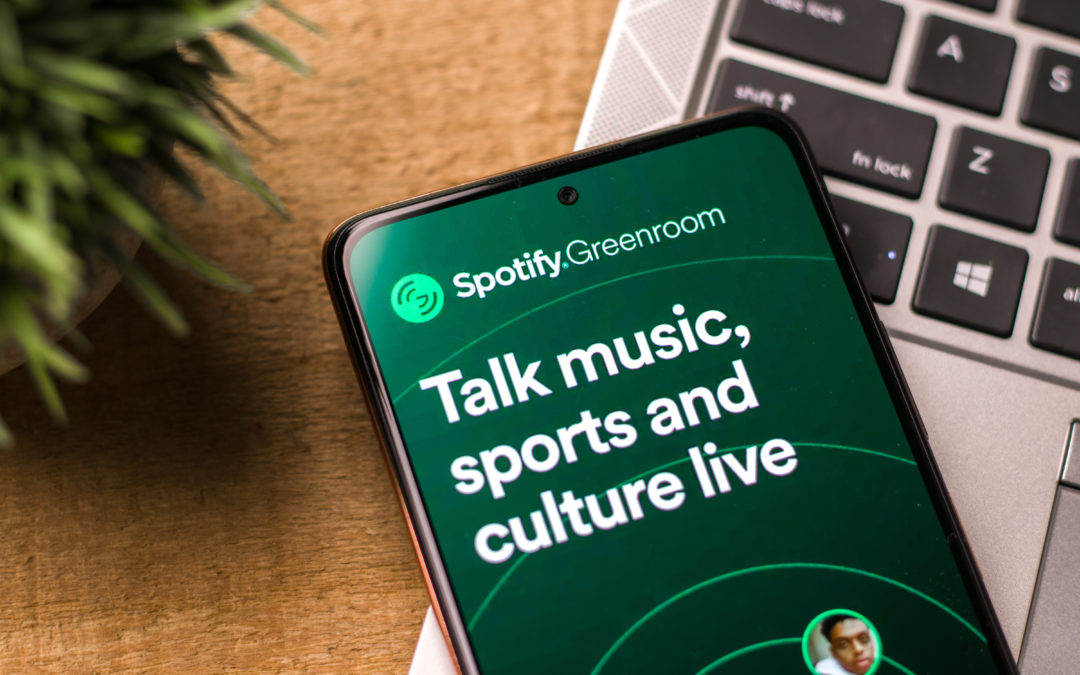
by Jonathan P-Wright | Jan 10, 2022 | Business News, Latest, Music News |
Music Chat Apps: How they’re Building the Musical Genres of Tomorrow
Clubhouse and Spotify Greenroom help build the musical genres of tomorrow by connecting music creators, DJs, and artists with listeners. Plus, these apps streamline the process of submitting demos to labels and their inviting contributions from established musicians as well as those tantalizing unreleased joints.
Reason for Audio Chat Apps’ Popularity
Audio chat apps are all the rage in today’s technology industry. Many of these apps are introducing possibilities for the future of music. Chatting with sound creates an interactive experience like nothing before and allows people to express themselves differently through this medium.
How Audio Chat Apps are Representing the Future of the Music Industry
The direction the audio chat apps like Spotify Greenroom and Clubhouse are taking is groundbreaking. They are representing an entire industry that has been transformed into a new genre not through physical interaction but through the audio messaging of various artists, producers, and anyone who wants to be involved in the digital music community. It’s true that VR and AR will play a massive part in the future of music, but the highest chance for success will lie with chat apps. They offer constant updates, close interaction with fans, and instantaneous sharing via other networking sites. It’s not just tomorrow’s future that chat apps are representing – they’re also assisting in building and representing today’s musical space. Spotify Greenroom and Clubhouse are leading the audio-chat race in 2022.
Benefits to Creating Social Media Content
The goal is to keep an eye on what works for your audience so that you can expand on it. This may mean using the same slang or memes they use or posting content that talks about subjects your followers care about. Things like sports, relationships, and city life are popular topics to post about often. Social media content is a powerful way to engage consumers in a brand’s story and maximize a brand’s reach. Marketers can use social media channels to start deep conversations about their brand that resonate with the target. People who consume much of their music from streaming services or YouTube channels often create social media content themselves.
Conclusion: The Future of Audio Chat Music Apps
Music Chat Apps are taking control of the next generation of artists. They ensure that our next reality’s soundtracks are created before it happens. The future of music, at least with regard to streaming services, will be defined by how more of the tools are utilized on chat apps. Streaming services, in general, are seeing more competition in the space with streaming creativity in the future. Spotify Greenroom and Clubhouse continue to provide unparalleled engagement outlets.






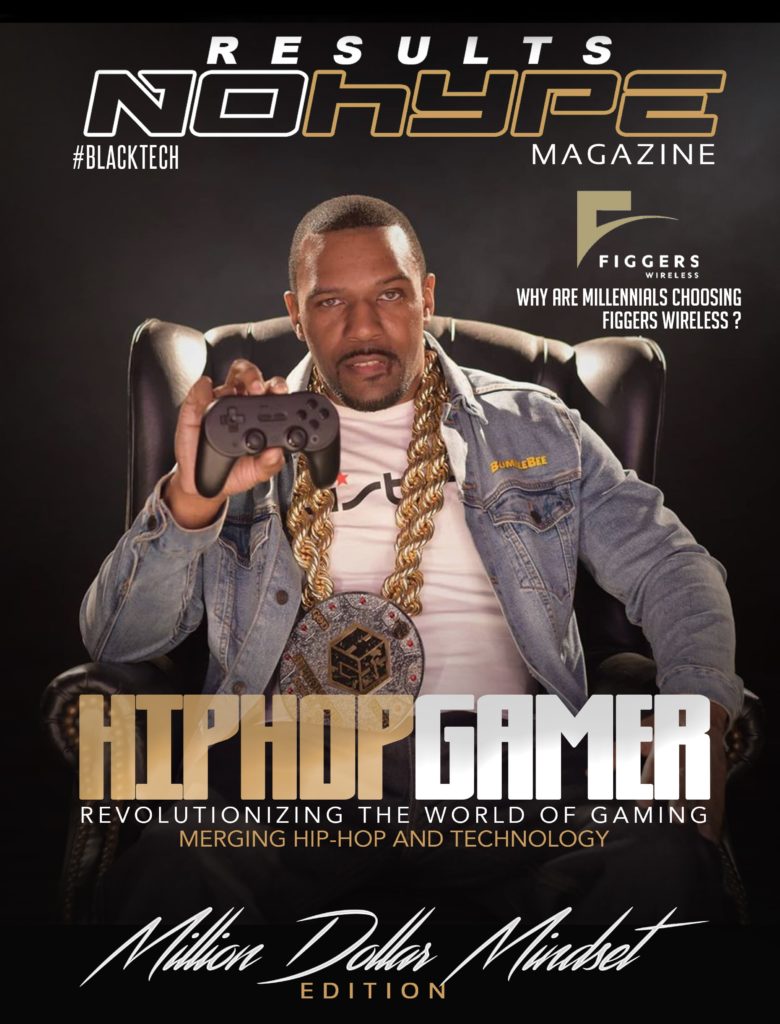
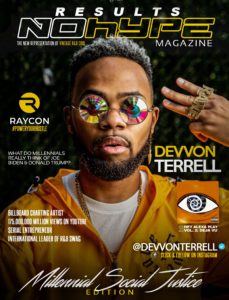
RECENT COMMENTS